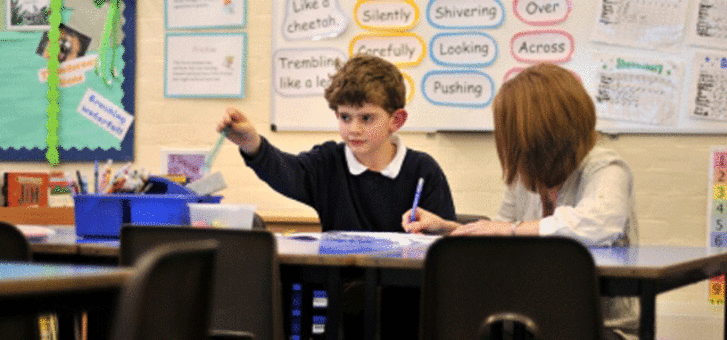Being a teacher has its downsides: long days, sick students, disgruntled parents, assessments and marking, and the continual need to be upbeat and enthusiastic.
Yet the upsides are abundant too: responsive students, eager learners, thankful parents, healthy students, great results, individual progress and daily rewards. Each day, I enter a classroom full of young people and pray the upsides outweigh the down.
Throughout my brief teaching experience, God has placed a diversity of students in my daily care.
I believe each student who has walked through my door has taught me something about life, learning, love and myself. There are the excited students, who sit in the front row, craning their necks to read the blackboard; eager to digest the knowledge I will impart. Then there are those who struggle, sit midway back and prefer the person next to them to the information I have dutifully prepared.
And, of course, there are a few who stroll in late, smirk at my request for a late note, push their way to the back row and sit for the remainder of the lesson boring holes in my head with their eyes. There are all kinds.
I must admit, I am a slow learner. As I watch my students, I am reminded of similar gestures, remarks and insights I once gave to my own teachers. I cringe to think what they would say if and when they discover my career path. I wasn’t always a keen learner and positive pupil. Yet today, I admit it is my students who teach me, more than the other way around. I believe there are three key areas on which my students have shed light: patience, diversity and being real.
be patient
Reading through the roll, I stumbled over names, hoping the class would ignore my pronunciation mishaps.
“Miss, chill out!” called a voice from the back. “Be patient, we are all here.” As the voice continued, I had to chuckle.
Being new and nervous, I wanted to get to the good part—the teaching— instead of focusing on the task at hand.
Someone once told me: “Take the time to get to know your students— especially how to pronounce their names—and they will respond much better to you.” While it took some time to properly say each first and last name without slowing down or stumbling, my beloved students assisted every step of the way, pleased I was making an effort.
Learning names became the first hurdle; then came the actual lessons, classroom management and the dreaded parent–teacher interviews. I was relieved to discover that I began to give back the patience my students showed me through my learning curve.
If I struggled in teaching a concept or in getting marked assignments back on time, my memory flicked back to the brave student calling out, “Miss, chill out!” And I relaxed! Each step in my teaching takes time and effort, yet patience has become the key to success.
everyone is different
At first glance, many of my students look and sound similar. Put them in a uniform and, at times, I get totally confused. I quickly learned names and put them with faces, as it is a near unpardonable sin to call a student by the wrong name. The next step was to identify unique qualities.
One must never favour students or treat them differently because of how one feels about them, yet this is easier said than done. I have taught siblings, stepsiblings, cousins and close friends and even though they are obviously not the same person, there is an unmistakable likeness that occasionally trips me up. I once congratulated the wrong boy on his sister’s baby. The look of shock and horror on his face informed me it was not his sister. Humour, however, can be seen in most cases. It is the unkind treatment that cannot be forgiven.
Remembering that every student is different, with different needs, became a hard lesson when two senior girls asked to speak to me after class. “Of course,” I replied, noticing a hint of anger in their eyes.
“You treat us different from the other students,” they said, completely throwing me out of my comfort zone. We sat down and I asked them to outline my transgressions, which they did—quickly and too easily.
As they spoke, I had to admit they were right on all counts. I had somehow confused their unique qualities with a dislike for my class, thus treating them with less care than I did my other, more eager learners.
I thanked these young ladies for their openness and willingness to share their concerns. We cried, prayed and began things anew. “Everyone is different, Mrs Kapao, you should know that.” The words rang true and I remember thinking the same thing as a student myself. How quickly one forgets.
be real
One of the best things about teaching is the daily performance. Regardless of how I feel, I am required to make things interesting and memorable— at least for the most part. One day, during a speech unit, I got carried away in a nonverbal communication demonstration. I was brought back to reality with the comment, “You’re really weird, Miss.” Yet to this day, it is that lesson alone that those students remember! God has made us each special and unique, and my students need to see me the same way I see them. It has become obvious that students enjoy seeing appropriate emotions, hearing about my family from time to time, and listening to my personal experiences in life. I once asked my students to write down whether or not they cared when I shared stories in class. One responded, “I love it! It is great to know you are human.” And another, “They are good and keep the lesson moving.” I was pleased I had done the exercise, both to get their feedback and to keep me on track.
I don’t want to be out of touch or robotic as I demonstrate life to my students.
They are drawn to me when I most need support, as they revel in me being real. The other day, during a difficult discussion, I felt flustered and wanted to pull away and teach the text.
But something told me to share a personal experience that related to the lesson.
At the end of the class, several students stayed behind to say how much they appreciated my sharing the story.
Being real has its benefits.
It is not every day that one has a chance to become a better person. Yet I believe I have more than 60 individuals helping and honing me into a more caring and dedicated Christian every day. Whether it be patience, diversity or being real, I learn from my students.





